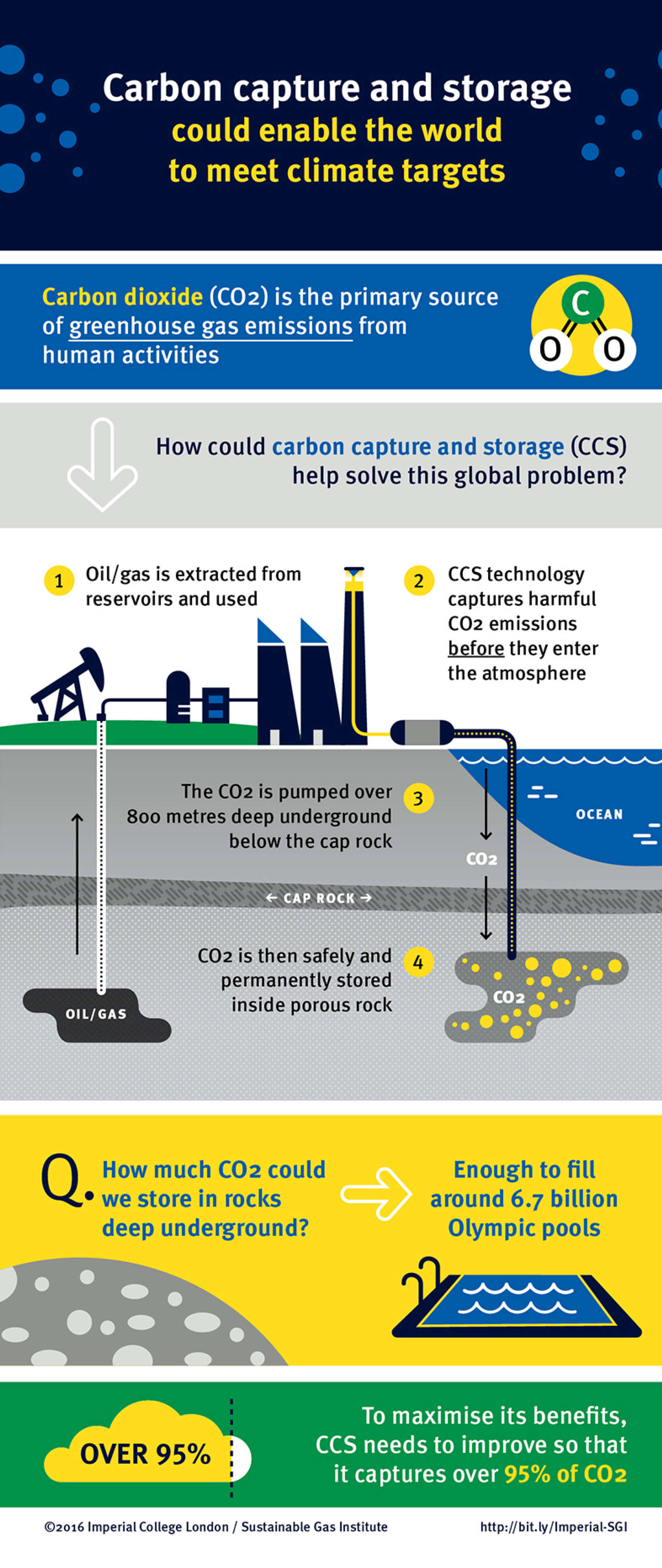Carbon capture and storage
Research suggests that if carbon capture and storage technology (CCS) can be refined, it will enable the world to use more of its 'unburnable carbon'.
CCS technology involves catching harmful carbon dioxide emissions from factories and power stations. These emissions are transported via a network of pipes and trapped inside the microscopic pores of rocks located kilometres underground.
This infographic explains the CCS process.

Text-only version
Carbon capture and storage (CCS) could enable the world to meet climate targets.
Carbon dioxide is the primary source of greenhouse gas emissions from human activities. How could CCS help solve this global problem?
The steps of CCS explained:
- Oil and gas are extracted from reservoirs and used in factories and power stations
- CCS technology captures harmful carbon dioxide emissions before they enter the atmosphere
- The carbon dioxide is pumped over 800 metres deep underground below the cap rock
- The carbon dioxide is then safely and permanently stored inside porous rock,
We could store enough carbon dioxide in rocks underground to fill around 6.7 billion Olympic swimming pools.
To maximise its benefits, CCS needs to improve so that it captures over 95% of carbon dioxide emissions.


